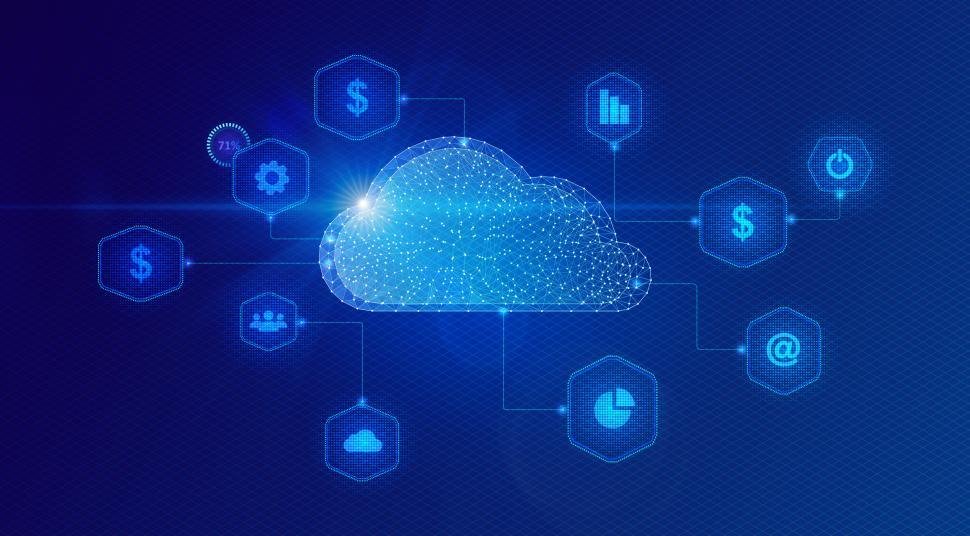Systemic Services: Why it’s Time to Include the Cloud
The role of the Cloud in Systemic Services and Financial Stability
Systemic Services and Financial Stability
The recent Amazon Web Services (AWS) outage served as a stark reminder of how dependent modern finance has become on a small number of critical digital service providers. Last Monday (20 October 2025), for a few hours, essential banking and payment systems were disrupted, showing how technical faults in data centrescan ripple through the financial system.
The Bank of England has long recognised that certain financial functions are so vital to the UK economy that their disruption could threaten financial stability. These are known as systemic services - the backbone of the financial system on which households, businesses, and markets rely daily.
What are Systemic Services?
The Bank of England is responsible for the operational resilience of the financial sector and considers a service to be systemic when its failure could have a broad and severe impact on the financial system and the larger economy. These services ensure that money flows, risks are managed, and confidence is maintained.
They include payment and settlement systems, market infrastructure, credit intermediation, insurance, and access to deposits and liquidity. Each plays a unique but interconnected role in supporting the financial ecosystem.
Key Systemic Services
1. Payment and Settlement
Core payment systems such as CHAPS (the Clearing House Automated Payment System) and RTGS (Real-Time Gross Settlement) enable the safe and efficient transfer of large-value payments between banks and institutions.
The Bank also oversees emerging digital settlement systems, including systemic stablecoins and other distributed-ledger platforms that could one day rival traditional payment rails.
2. Financial Market Infrastructure (FMI)
FMIs underpin financial markets by ensuring trades can be cleared, settled, and recorded reliably. The Bank of England supervises entities like central counterparties (CCPs) and central securities depositories (CSDs), ensuring they can manage risk, remain solvent, and continue operating even during stress events.
3. Intermediation
This involves channelling savings into investment - enabling households, companies, and governments to access finance. Intermediation supports growth and stability by ensuring funds are allocated efficiently across the economy.
4. Insurance
Insurance provides a mechanism to spread and manage risk, protecting households and firms from shocks and enabling recovery after loss. The insurance sector’s stability is essential for maintaining confidence across the economy.
5. Deposit and Liquidity Facilities
Deposits and liquidity facilities give firms and individuals confidence that their money is accessible and safe. They are crucial for maintaining trust and ensuring that the financial system functions smoothly in both normal and stressed conditions.
Ensuring Operational Resilience
The Bank of England’s Operational Resilience Framework aims to ensure these systemic services can withstand, absorb, and recover from disruption. The Bank’s focus has expanded beyond traditional finance to include critical third parties (CTPs) - technology firms and service providers whose systems are integral to financial operations.
In our view, events like the AWS outage highlight that operational resilience is not just a technical issue, but a core component of financial stability. When critical cloud infrastructure fails, even temporarily, it can interrupt payments, lending, and market operations, demonstrating the growing interdependence between finance and technology.
Should Cloud Providers Be Treated as Systemic?
A key question now facing regulators is whether cloud service providers - such as AWS, Microsoft Azure, and Google Cloud - should be brought formally within the scope of financial regulation.
The Case for Including Cloud Providers within FMI
Proponents argue that major cloud firms now perform functions equivalent to those of Financial Market Infrastructure (FMI). They host payment systems, settlement platforms, and bank ledgers. A widespread outage could disrupt core financial services just as much as a failure at a clearing house or settlement system.
Including them under FMI regulation would allow for direct supervision, stress testing, and continuity requirements - ensuring that these technology providers maintain the resilience expected of systemic entities.
The Case for a New Category
Others argue that cloud providers are fundamentally different. They operate across multiple industries, and their systemic importance arises from dependency, not direct financial activity. Subjecting them to FMI-style regulation could blur boundaries and stifle innovation.
Instead, the Bank and HM Treasury have proposed treating such firms as Critical Third Parties (CTPs) - a new regulatory category designed specifically for non-financial entities that underpin financial stability. Under this framework, cloud providers would face direct oversight on resilience, risk concentration, and continuity, without being defined as FMIs.
The Emerging Consensus
The consensus is shifting toward a hybrid model: acknowledging that cloud and technology firms are systemically important, but requiring a tailored regulatory approach. The AWS outage underscored how a small number of providers now represent potential single points of failure for the entire financial system. As financial institutions continue migrating their core infrastructure to the cloud, the line between financial infrastructure and digital infrastructure will only continue to blur.
The Future of Systemic Services
The Bank of England’s focus on systemic services reflects a broader shift in financial stability policy - from managing financial risk to managing operational and technological risk.
As the financial system becomes ever more digital, resilience, redundancy, and oversight of critical third parties will be as important as capital ratios and liquidity buffers once were.
Whether through the extension of FMI regulation or the creation of a new supervisory framework for CTPs, it is clear that the next frontier of financial stability will lie not just in banks and payment systems, but in the cloud itself.

